With over 50% of the Island protected as an Isle of Wight National Landscape (formerly known as Area of Outstanding Natural Beauty), and one of only 7 places in the UK to be declared a UNESCO Biosphere Reserve, The Isle of Wight has some of the most spectacular landscapes and diverse, rich habitats in the country for wildlife.
We have beautiful creatures like The Glanville Fritillary butterfly, internationally important populations of Brent Geese, wild deer in our woodlands and one of our most famous residents, the Red Squirrel - there is also a chance to spot the rare Cattle Egret bird, or a Bottlenose Dolphin!
So, what can you see and how do you spot them when you visit the Isle of Wight? Let's take a look below (be sure to scroll to the bottom of this page as we provide insight on what you can see when you are travelling over on the ferry!)
Birdwatching
With nearly 100 species of birds breeding on the Island and many more passing through during migration and arriving for the winter, the Isle of Wight is a treat for birdwatchers at any time of year.
The diverse habitats of the Island provide nesting sites for several scarce birds including Bitterns, Marsh Harriers, Nightjars, Nightingales and Dartford Warblers. In spring and summer, the Downs are alive with the songs of Skylarks and Linnets, woodlands echo to the sound of Blackcaps and other warblers, Lapwings display over the wetlands and colonies of Cormorants and other seabirds cling to the cliffs.
Seeing birds on migration is always a thrill, with the Island on the main `flyway’, it is both a spring arrival site and an autumn departure point for thousands of birds. Warblers, Wheatears, Flycatchers and Redstarts often touch down along The Channel coastline of the Island after their long flights from Africa in the spring and seabirds returning to UK shores pass by headlands, including Gannets, Terns, Skuas and Auks. Autumn can provide a real bird spectacle with large gatherings of Swallows and Martins, flocks of Yellow Wagtails and Thrushes, and there is always the chance of rarer sightings such as Cattle Egret, Honey Buzzard, Osprey or Wryneck.
The Island is also home to the UK’s largest bird of prey – the White Tailed Eagle. Also known as Sea Eagles, these amazing birds have a wing span of up to 2.5 meters. They are currently being returned to the south coast through a reintroduction program based on the Isle of Wight. This a bird of both coastal and inland wetlands, largely because of its preference for fish.
As autumn flows into winter, Brent Geese arrive from Siberia and the coasts and wetlands of the Island teem with other wildfowl and waders from northern climes such as Wigeons, Pintails, Dunlins, Turnstones, Plovers and Godwits.
Bird hotspots:
- Brading Marshes RSPB Reserve, situated on the east coast, adjacent to Bembridge Harbour, has a range of wetland habitats, including lagoons and reedbeds. In spring/summer, plan an early morning or late evening visit to listen for the Bitterns `booming’ song from the reedbeds, also look out for Kingfishers.
- Newtown National Nature Reserve, managed by the National Trust, is an inlet that lies on the northern coastline, with an extensive area of saltmarshes and intertidal mudflats. Time your visit 2 hours either side of high tide to increase your chances of seeing wildfowl and waders moving to and from their roosts, especially autumn to early spring.
- Western Yar River, bisecting the west of the Island, with a range of habitats including saltmarsh, reedbeds, lagoons and woodland. Use the former railway line path that stretches from Yarmouth to Freshwater for views across Rofford Marsh and the estuary, which also gives access to Mill Copse for woodland birds.
- White Tailed Eagles can be spotted all over the Isle of Wight, but they are often seen hunting over the Solent and surrounding estuaries, with the woods and cliffs of the Island making quiet areas for them to rest.
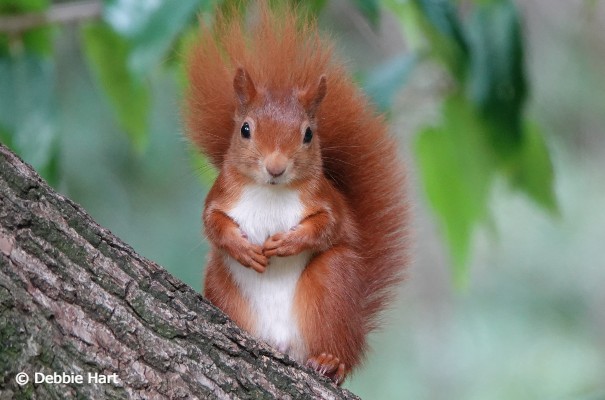 |
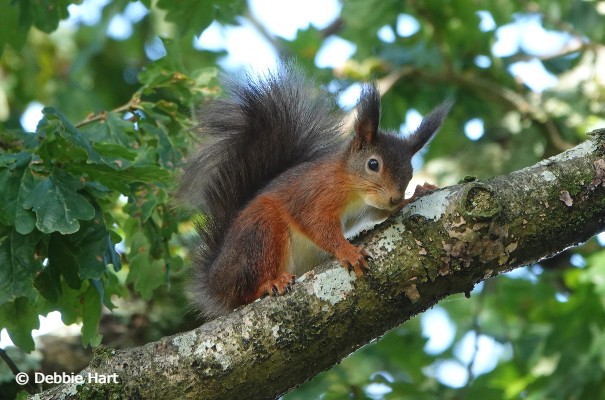 |
Red Squirrels
One of our most famous residents, the Red Squirrel is the only native squirrel in the UK.
Apart from in the north of the country, the Isle of Wight is one of only a few places you can see this charismatic mammal in the whole of England, with a population of around 3,000 individuals.
They can be found in many of the Island’s woodlands and though they can be elusive, spending much of their time in trees, autumn brings them to the forest floor, as they cache hazelnuts, beech mast, pine nuts and acorns into the ground for future nourishment, relocated by smell during the winter. Famed for their chestnut reddish-brown colouring, Red Squirrels can be quite variable in colour and in winter, their fur is often darker, tinged with grey, with much longer ear-tufts.
Red Squirrel hotspots:
- Alverstone Mead, a Local Nature Reserve near Sandown, has a wildlife watching hide and as well as providing views of Red Squirrels, is also a site for woodland and wetland birds.
- Parkhurst Forest, managed by Forestry England, north-west of Newport is the largest mixed woodland on the Island and a superb site for Red Squirrels, especially when visited during the first few hours after dawn and before dusk.
- The Garlic Farm, near Newchurch, has a Red Squirrel Feeding Station which can be viewed from the lawned area and the restaurant.
Butterflies
The Isle of Wight is a truly special place for butterflies, with up to 40 species recorded each year, it is one of the best areas for these beautiful insects in the whole of the UK.
The Glanville Fritillary is the jewel in the crown, virtually confined to the Wight, they favour the landslips and coastal grasslands of the southern half of the Island and the adults can be seen between late April and early June.
With generally mild winters on the Island, butterflies are often on the wing by early spring, with some of the most colourful including Brimstone, Peacock, Red Admiral and Orange-tip.
By summer, the wildflowers of the Downs and meadows are in full bloom and butterflies feed on the nectar, especially the Blues and the Skippers. In some years, Chalkhill Blues can number in the tens of thousands and scarce species such as Adonis Blues and Grizzled Skippers bask in the summer sun. Woodland specialists, Silver-washed Fritillaries and Speckled Woods fly in the dappled light and in the canopy, White Admirals and Purple Hairstreaks may prove more elusive.
Several migrant butterflies reach the Isle of Wight every year, particularly Painted Lady’s and Clouded Yellows and rarer species have been recorded, such as Large Tortoiseshell and Swallowtail.
Butterfly hotspots:
- Ventnor to Compton Bay, the southern edge of the Island, is the stronghold of the Glanville Fritillary. They particularly like sunny slopes along the undercliff and adults on the wing usually peak around the second half of May into very early June.
- Arreton Down, managed by the Hampshire & IOW Wildlife Trust, is renowned for large numbers of Chalkhill Blues in summer. Also look out for Adonis Blues and the Brown Argus.
- Borthwood Copse, north of Apse Heath, is a notable site for woodland species such as White Admirals, Silver-washed Fritillaries, Speckled Woods and Purple Hairstreaks. Sunlit glades within the wood can provide the best chance for sightings.
Sealife and Shorelines
Hidden under the surface of the Solent lies vast beds of sea-grass, chalky reefs and intertidal flats home to an amazing array of wildlife including many species of fish, seahorses and cuttlefish.
Cetaceans are sometimes seen in the Solent and close inshore in The Channel, particularly Harbour Porpoises, Common and Bottlenose Dolphins and on rare occasions may even be seen `breaching’, leaping completely out of the water. Other sea mammals can be sighted, both Common and Grey Seals are now resident around the Island. Both species have a habit of bobbing around on the surface as they breathe or take a rest from swimming, an action known as `bottling’.
The Island is surrounded by superb shorelines, and as the tide ebbs, rock pools are revealed, teeming with life. Shore Crabs, Blennies and Shrimps blend in with the brown, red and green seaweeds as they search the pools for food and Anemones, Top Shells and Limpets cover the rocks.
Sealife hotspots:
- St. Catherine’s Point, the most southerly headland on the Island and partially owned by The National Trust and Trinity House, is one of the best viewpoints to look out over the sea for cetaceans, especially in late summer. In addition, look out for Grey Seals in the bay near Rocken End.
- Bembridge Ledge, a rocky reef at the east of the Island has a large area of rock pools and lagoons, with rare seaweeds, particularly Peacock’s Tail and unusual marine life such as stalked jellyfish. Visits to shorelines for safe rock pooling must be on an ebbing or low tide.
- Compton Bay, on the south western side of the Island, is a haven for fossil hunters searching for dinosaur bones and teeth and is renowned for a large number of dinosaur footprints. Keep your eyes peeled for a possible sighting of Bottlenose Dolphins making a splash!
Wildlife from the Ferries
The Special Waters of the Solent
As you board a ferry from the mainland to the Isle of Wight, you are about to sail from one Heritage Coast to another, across a very special stretch of water, teeming with wildlife above and below the surface. The Solent is a submerged valley formed around 7,500 years ago and holds vast beds of sea-grass, chalky reefs and intertidal flats home to an amazing array of wildlife including seahorses, cuttlefish, seals, cetaceans and many species of birds, especially on the coastlines. Arriving on the Isle of Wight, you are setting foot onto a UNESCO Biosphere Reserve, designated for its outstanding ecology and culture.
Spring and Summer
Spring sees the return of seabirds and several species can be seen flying by the ferries, most still on their aerial journey north for the breeding season, especially Gannets, gliding over the waves with their 2-metre wingspan and Fulmars, close relatives of albatrosses. Other common birds on passage can include Arctic Terns, Kittiwakes and Razorbills, but occasionally Skuas may enter the Solent. These 'pirates of the seas' will chase other birds until they give up their food cache to then claim it for themselves, a feeding technique known as 'kleptoparasitism'. Members of the Auk family, Guillemots nest on the narrow cliff ledges in the west of the Isle of Wight and sometimes venture into the Solent to feed, using their wings like flippers to dive to depths of up 180 metres in pursuit of fish. Now nesting nearby in Poole Harbour, thanks to a successful introduction scheme, Ospreys once again patrol over the waters of the Solent, swooping down to catch a fish.
Terns are often seen hovering, then swooping down to take fish near the surface of the water. Sandwich Terns are the largest, with their shaggy black caps and long narrow wings, Common Terns have short tail-streamers and a bright orangey-red bill with a black tip and the diminutive Little Terns are renowned for their fast flight and recognised by their white foreheads and sharp yellow bills with black tips.
Occasionally, a break on the surface of the water, can lead to sightings of Harbour Porpoises as these aquatic mammals take in air. Identified by their small triangular fins, set just past the centres of their backs and their short blunt 'beaks', they are the most common of the cetaceans in the Solent, but there is always the chance of seeing Common and Bottlenose Dolphins, which can sometimes 'breach', leaping out of the water entirely.
Common Seals, also known as Harbour Seals, have taken up residence in the Solent over the last two decades, with up to 50 recorded on recent surveys and smaller numbers of Grey Seals are now also present. Both species may be seen bobbing around on the surface as they breathe or take a rest from swimming.
From the Lymington to Yarmouth Wightlink ferry, you can see thousands of pairs of Black-headed Gulls breeding on the marshes, their loud calls creating a raucous sound. The nesting colonies are always a flurry of activity, especially when the adults are feeding their young or mobbing intruding birds of prey, such as Marsh Harriers. A few pairs of Mediterranean Gulls, Shelducks and Sandwich Terns also nest here and in the early part of spring, the tumbling courtship displays and 'peewit' calls of Lapwings and the ringing 'yodelling' notes of Redshanks bring a wild aura to the marshes.
Approaching the Isle, Cormorants are regularly seen perched on buoys and shipping markers, often with their wings outstretched as they dry out their feathers after a deep fishing dive to the sea-bed. Great Black-backed Gulls will share these perches, recognised by their matt-black wings and pink legs, and their size, they are the largest Gulls in the world, with a wing-span up to 1.7 metres. Standing tall, Grey Herons and Little Egrets may be seen around the shoreline and harbour areas of Yarmouth and in the skies above you may be lucky enough to spot one of the White-tailed Eagles that have been reintroduced to the Isle of Wight over recent years and are now establishing breeding territories.
Autumn and Winter
As soon as the ferry leaves Portsmouth, Southampton or Lymington, into the waters of the Solent, birds will be in the air, with gulls often flying in the wake of the boat. Several species can be present, including Black-headed, Common, Great Black-backed and Mediterranean Gulls. Birds of the open sea include Red-throated Divers, Great Crested Grebes and occasionally Common Scoters and Eider Ducks, all diving specialists.
This is the best time of year to see Kingfishers around the harbours and estuaries, appearing as a 'blue flash', with rapid wingbeats as they fly between their favourite fishing perches, with regular sightings from the outdoor seating of the Curlew Café in Lymington Ferry Port.
As you set sail down Lymington River or Southampton Water, the tidal edges are a magnet for autumn migrant wading birds, as they return south to their wintering grounds. Black-tailed Godwits probe the mud with their long bills, Greenshanks feed in the channels, Grey Plovers stealthily search for sandhoppers and Turnstones flip over pebbles and seaweed in search of small crustaceans.
Although still a rare sight, Otter populations in Hampshire have increased over recent years and there is always the chance of a glimpse of one of these enigmatic mammals around the river mouths, with occasional sightings around the Isle of Wight.
On approaching the Island, the Ryde to Fishbourne coastline and Yar estuary are the main areas for Brent Geese, which breed in Siberia and migrate south over winter around the southern shores of England from October through to March. Several thousands of the 'dark-bellied' race of Brents frequent the Solent, often seen close to the Hovercraft terminal and Ryde Pier and their distinctive 'cr-onk', almost 'purring' calls bring a sense of wildness to the seascape, especially when joined by the bubbling calls of Curlews that feed on the shore.
As well as Curlews, the sand and mudflats along the north of the Island are home to several other species of wading birds, such as Sanderlings, visitors from the high Arctic, which busily feed in flocks along the edge of the tideline, and they are often joined by other small waders such as Ringed Plovers and Dunlins. Redshanks, with their long red legs, probe for food in the intertidal mud and the bold black and white colours of Oystercatchers, with their bright orange bills, catch the eye as they patrol for cockles and mussels.
Towering over the wading birds, Grey Herons stand tall and still, poised waiting to strike for fish that swim within reach, and their smaller relatives, Little Egrets, with their pure white plumage dart among the tidal pools. Other large white birds are conspicuous near the shoreline, with Mute Swans gathering together in flocks, especially by Ryde Pier. They are one of the heaviest flying birds in the world and will run along the surface of the sea, gaining speed, while flapping their wings to take flight. Once aloft, they have slow, graceful wingbeats which make a humming sound against the air.
 to add an item to your Itinerary basket.
to add an item to your Itinerary basket.


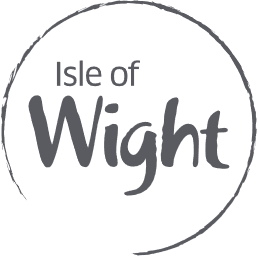



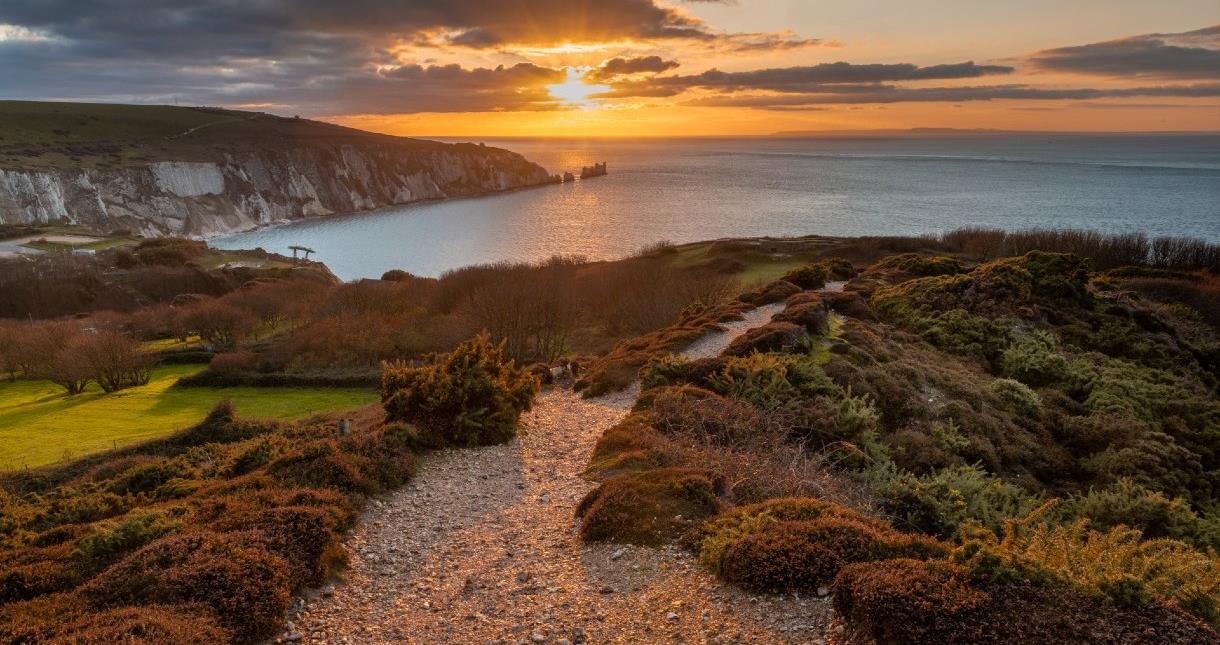
.jpg)
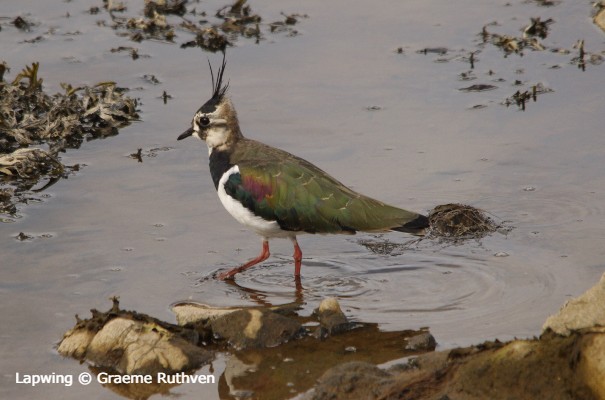


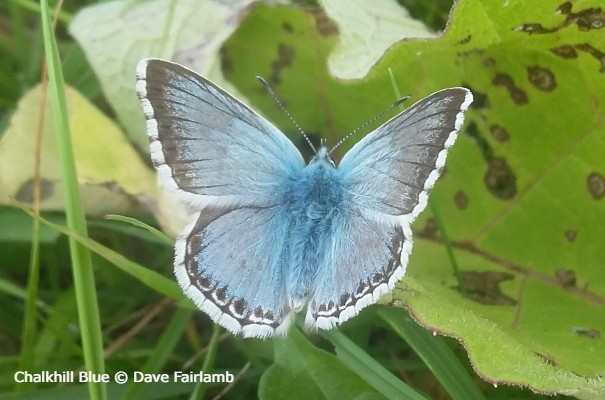
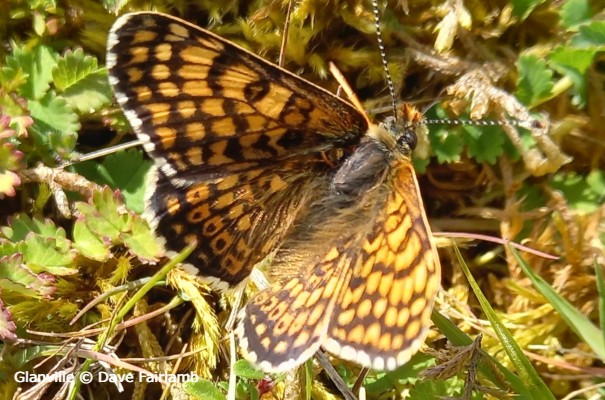
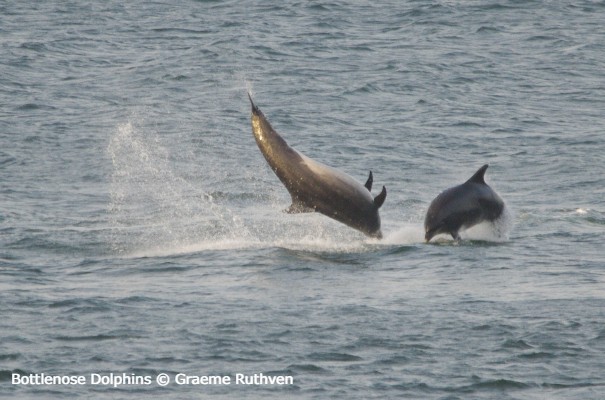
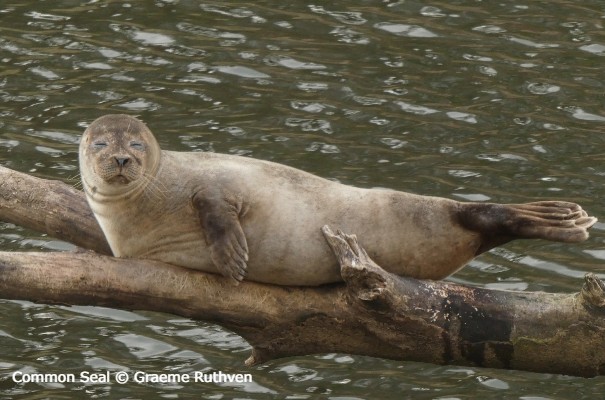
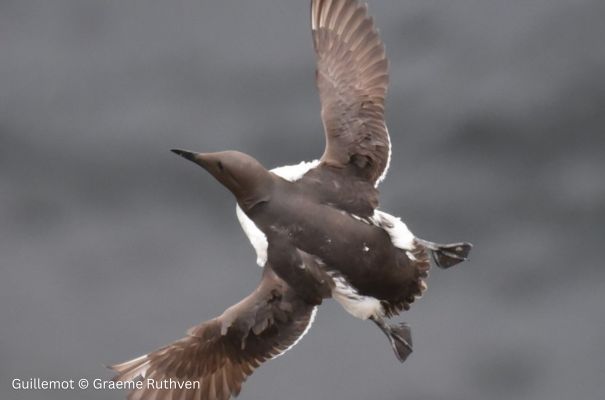
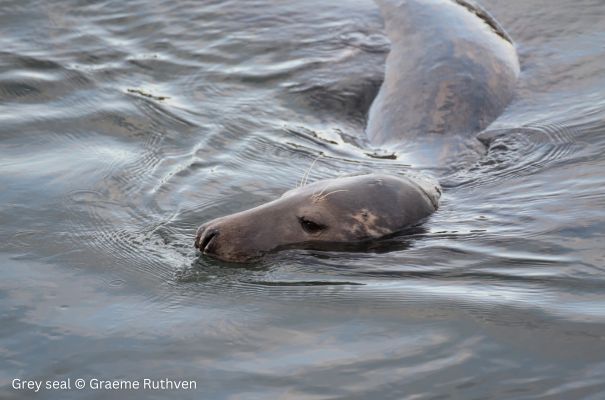
.jpg)
.jpg)



.png)






like, follow, share....join in!
Facebook
Twitter
Instagram
YouTube
TikTok
Threads